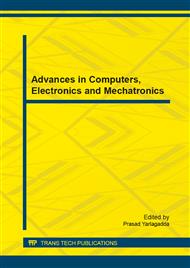p.218
p.226
p.230
p.237
p.242
p.248
p.255
p.260
p.264
Speech Coding Based on Compressed Sensing and Sparse Representation
Abstract:
In this paper, we propose a novel speech coding scheme based on compressed sensing and sparse representation. Compressed sensing (CS) attracts great interest for its ability to utilize a few measurements to recover original signals. Measurements preserve part of speech features while projected by row echelon matrix. A dictionary is learned in order to contain redundant information about speech measurements. The synthesized speech is recovered from a sparse approximation of the corresponding measurement. A rear low-pass filter is adopted to improve the subject quality of synthesized speech. Results show that the proposed coding scheme has achieved average Mean Opinion Score (MOS) of the synthesized speech 3.083 in an appropriate bit rate (4.2 Kbps), which outperforms the quality of Code excited linear prediction (CELP).
Info:
Periodical:
Pages:
242-247
Citation:
Online since:
October 2014
Authors:
Price:
Сopyright:
© 2014 Trans Tech Publications Ltd. All Rights Reserved
Share:
Citation:


